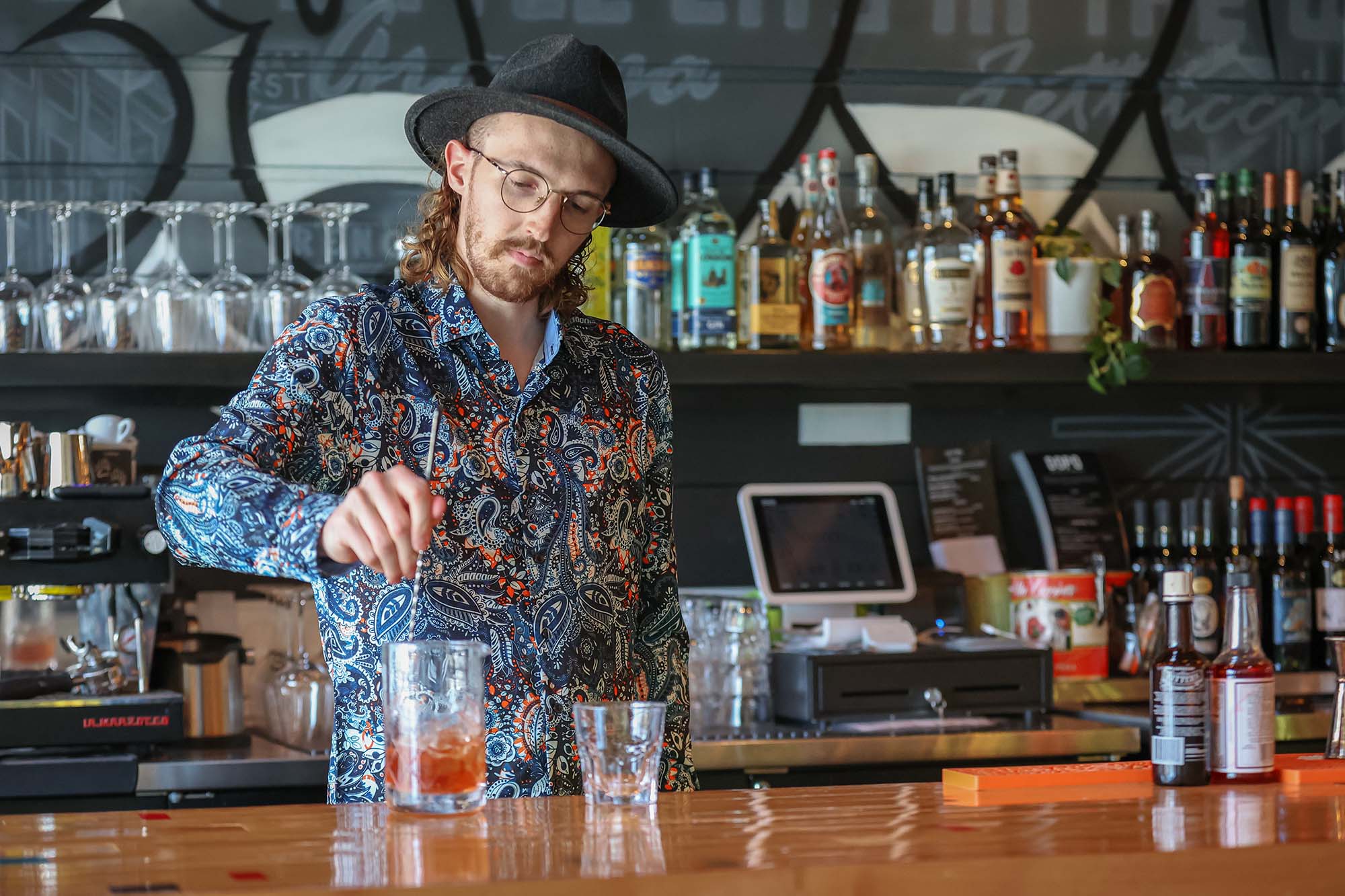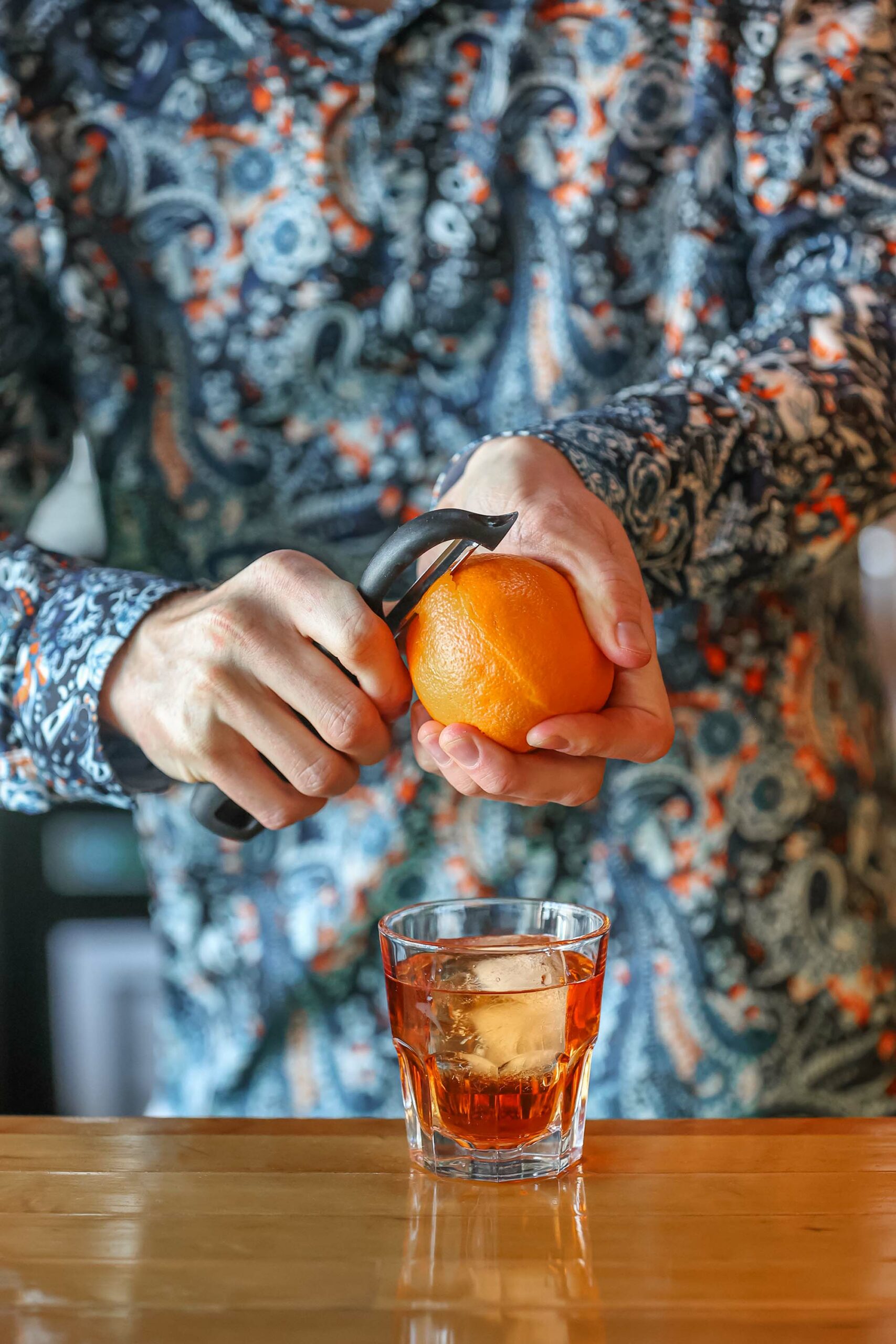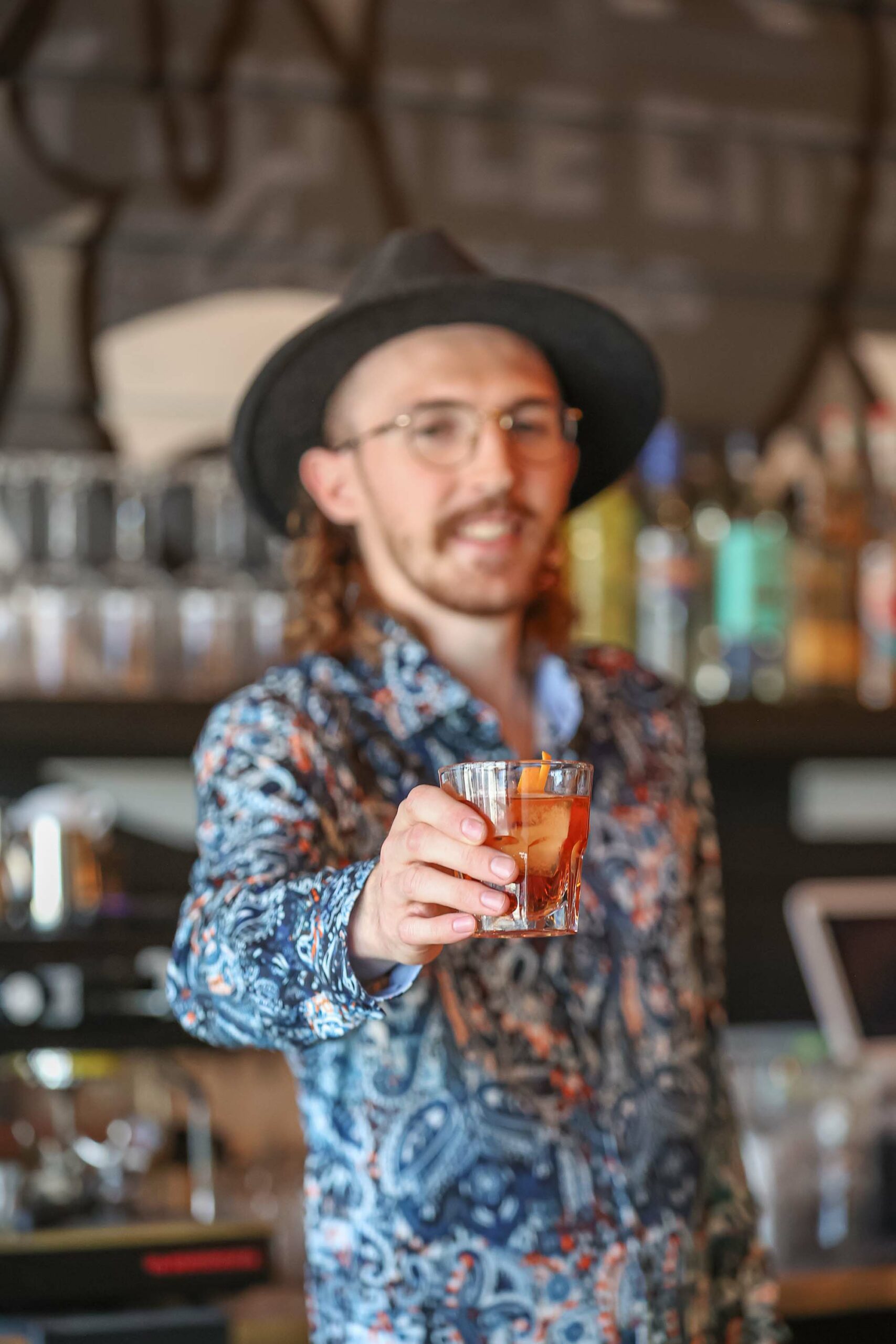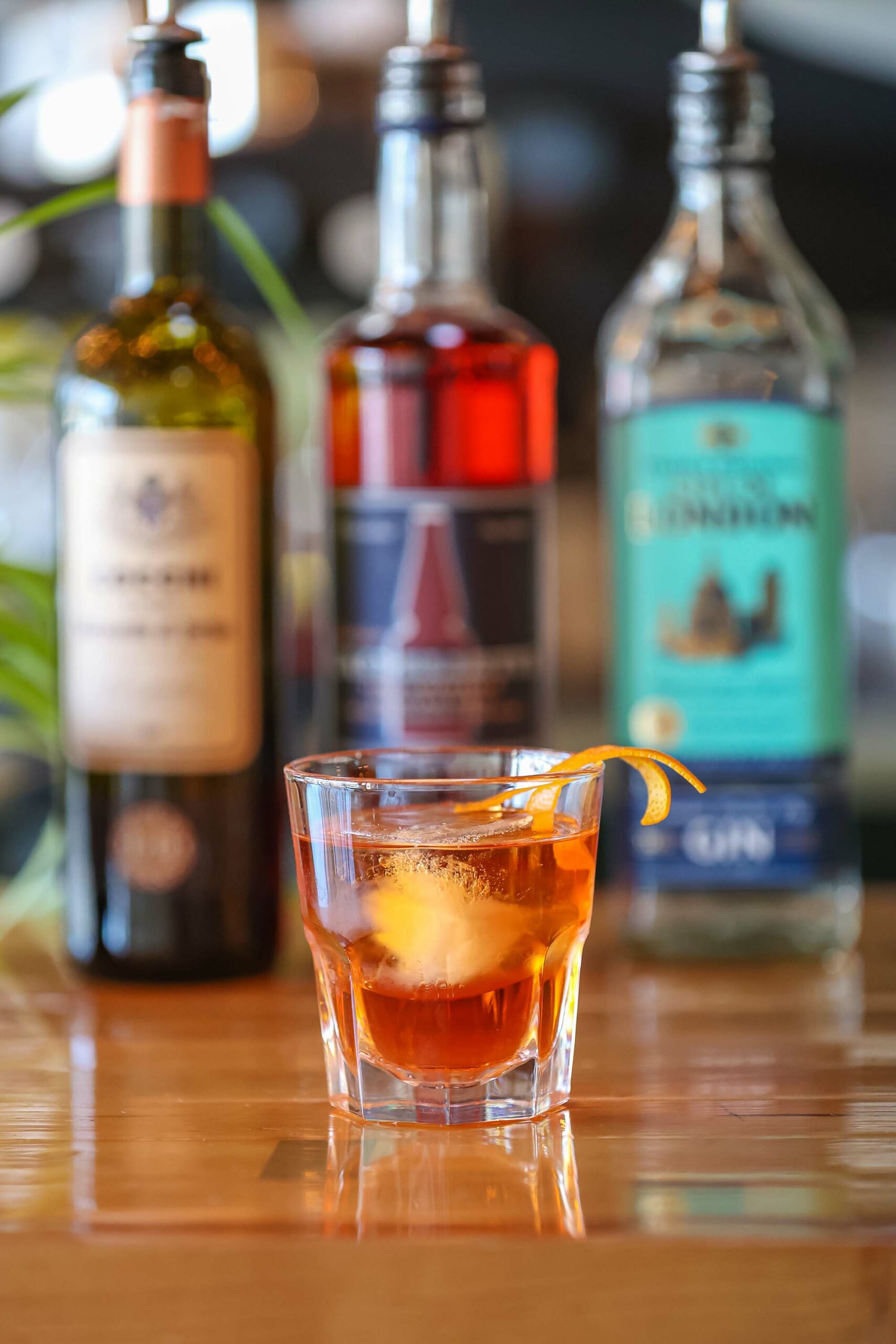Tips for creating this classic Italian cocktail at home.
It’s hard to pinpoint the origin of the Negroni, but one theory seems to carry more weight than others. A hybrid of the Milano-Torino and Americano cocktails, the Negroni was first ordered by Count Camillo Negroni and created by Fosco Scarselli in Florence, Italy, in 1919. Scarselli came up with the cocktail after Negroni requested an Americano with a twist. To oblige his friend, Scarselli got creative, replacing the soda water usually found in an Americano with gin, and swapping out the lemon slice for orange. The final recipe was comprised of equal parts gin, Campari, and sweet vermouth, built over ice and served in a rocks glass with a wedge of orange as garnish.
Popularity came quickly as word spread about the new concoction, and Negroni’s family swiftly built a distillery — Negroni Antica Distilleria — the same year in Treviso, Italy.
While the Negroni remains a classic, alcohol-forward cocktail of Italian descent, in true Scarselli fashion, many bartenders also have plenty of fun with the recipe. If you order a Negroni today, most mixologists top it with an orange peel (often burned slightly to release the aromas and flicked around the rim of the glass before it’s dropped in) instead of the classic wedge.
The drink is known as an aperitif that stimulates appetite before a meal, but it’s also subtle enough not to detract from the cuisine coming next.
“It’s often that cocktails served alongside food take over the palate, and the consumer cannot taste the ingredients and flavor combinations in the dishes in front of them,” says Eric Schoenfeld-Mineur, manager of DOPO Pizza & Pasta in Midtown Reno. “We wanted a spirit-forward cocktail that didn’t steal the show from [our] amazing pizza and pasta offerings.”


To further lighten the cocktail, the team at DOPO makes one major switch; instead of Campari, they use Cappelletti. While both liquors feature a citrus, herbal, and bitter profile, the Cappelletti provides an overall more rounded sipper and a subtle sweetness, according to Schoenfeld-Mineur. DOPO offers three varieties of the Negroni on its menu.
“The Negroni cocktail has been an industry favorite for all bartenders but has become more and more popular to the masses in the U.S.,” says Ivan Fontana, owner of Amari, also in Midtown.
An Italian-style amaro bar, its entire cocktail menu is comprised of amaro-based drinks. Riffs on classics, many of its menu items are layered with amaro, vermouth, or Campari, including three varieties of Negronis.
“All three options are a celebration of the classic Negroni — simple, boozy, and delicious,” Fontana says.
Whiskey drinkers may like the Boulevardier, another classic cocktail that’s similar to the Negroni, but made with whiskey instead of gin.
Other popular mix-ups include trading the gin for an agave-based spirit such as mezcal, which adds a hint of smoke, or using a Mexican-style gin, a là Amari’s bianco Negroni, to really play on the botanical flavors of the drink.
The bianco also switches out the standard vermouth for a Spanish white vermouth, another simple swap budding mixologists can make at home.
Perhaps one of the most popular variations is the white Negroni, made by combining gin with two French aperitifs, Lillet and Suze, and garnished with a lemon twist instead of an orange.
While anyone can stir up a Negroni at home, Schoenfeld-Mineur says there is no perfect recipe.
“If there was any one rule about the Negroni that I have learned over 15 years in the industry,” he says, “it is that it should be made with equal parts and with an equal amount of love and care for the ingredients and the recipient.”
Amari’s Classic Negroni
(courtesy of Ivan Fontana, owner, Amari in Reno. Serves 1)
1 ounce Fords Gin
1 ounce Campari
1 ounce Carpano Antica Formula Vermouth
Expressed orange peel
Combine all three ingredients in a mixing glass and stir together. Pour drink over ice into a rocks glass. Garnish with an expressed orange peel and serve.
DOPO’s Boulevardier
(courtesy of Eric Schoenfeld-Mineur, manager, DOPO Pizza & Pasta in Reno. Serves 1)

1 ounce Four Roses Bourbon
1 ounce Cappelletti
1 ounce Cocchi di Torino Sweet Vermouth
Expressed orange peel
Combine all three ingredients in a mixing glass and stir together. Pour drink over ice into a rocks glass. Garnish with an expressed orange peel and serve.
Zero-Proof Italian Spritz
For the youths at the table or those who prefer a mocktail, DOPO also serves up Italian sodas — and they are easy to mix up at home.
For many, Torani syrup is a staple of Italian sodas. When mixed with S.Pellegrino you get the sweet, flavored taste with the mineral water bubbles for a refreshing sipper. However, that’s not the only way to serve it.
At DOPO, they call the sodas a spritz. For children, a mixture of strawberry and lemon syrup (house-made is best, but you can use store-bought), organic half and half, and S.Pellegrino makes a regular beverage feel festive.
More for adults, but also featured for youths, DOPO bartenders offer a Lemon Basil Spritz, using house-made lemon simple syrup, fresh lemon juice, basil, and S.Pellegrino.
Make it at home with DOPO’s custom recipe, below.
Lemon Basil Spritz
(courtesy of DOPO Pizza & Pasta in Reno. Serves 1)
½ ounce lemon simple syrup
¼ ounce fresh lemon juice
4 ounces Pellegrino
3 basil leaves, muddled and strained, plus 1 leaf for garnish
Lemon wheel, for garnish
1½ ounces neutral grain spirit of choice (for adult version)
Using a jigger, combine ¼ ounce of fresh lemon juice, ½ ounce of lemon simple syrup, 3 basil leaves, and, if making adult version, spirit of choice into a cocktail shaker. Muddle until ingredients are incorporated. Add ice, shake, and double strain into desired glassware. Top with ice and fill to top with S.Pellegrino. Garnish with lemon wheel and fresh basil leaf.



